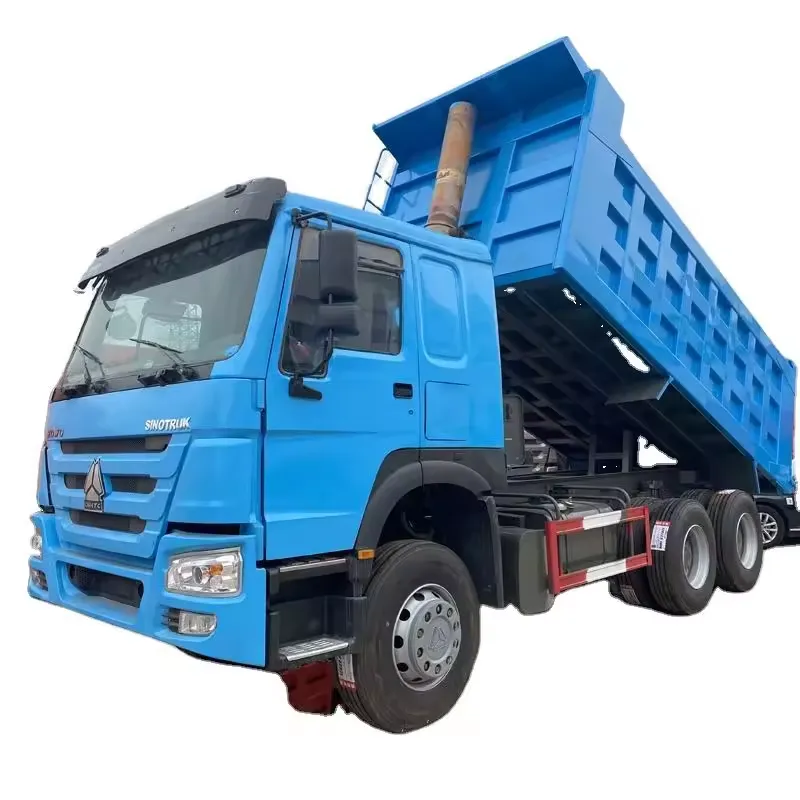24-D10, Building 3, Aosheng Building, Shunhua Road Street, Jinan, Shandong, China +86 13969167638 [email protected]
The construction and waste management sectors have undergone remarkable transformations in recent decades, with dump trucks emerging as indispensable workhorses that drive progress and efficiency. These powerful vehicles have become the backbone of industrial operations, facilitating everything from major infrastructure projects to environmental conservation efforts. As urban development continues to accelerate, dump trucks play an increasingly crucial role in maintaining the delicate balance between growth and sustainability.
Today's dump trucks represent far more than simple hauling vehicles - they are sophisticated machines that incorporate advanced technology, safety features, and environmental considerations. Their impact extends beyond construction sites, reaching into waste management, mining, agriculture, and various other industries where bulk material transport is essential.
Contemporary dump trucks showcase remarkable engineering advances that enhance their functionality and efficiency. Manufacturers have developed specialized hydraulic systems that enable precise control over loading and unloading operations. The integration of high-strength steel alloys in body construction has significantly improved durability while reducing overall vehicle weight, leading to better fuel efficiency and increased payload capacity.
Advanced suspension systems now provide superior stability during transport, reducing wear and tear on both the vehicle and road infrastructure. Additionally, automated tailgate mechanisms and heated truck beds prevent material freezing in cold climates, ensuring year-round operational capability.
Modern dump trucks increasingly feature sophisticated electronic systems that monitor and optimize performance. Real-time tracking capabilities allow fleet managers to coordinate operations efficiently, while onboard sensors provide crucial data about load weight, distribution, and vehicle condition. These smart features help prevent overloading, improve route planning, and schedule maintenance proactively.
The implementation of telematics systems enables detailed performance analysis and helps identify opportunities for operational improvements. Many dump trucks now incorporate automated safety features, including backup cameras, proximity sensors, and stability control systems, significantly reducing accident risks on busy work sites.

The waste management and construction industries are increasingly focused on reducing their environmental footprint, with dump trucks being a key area for improvement. Manufacturers have responded by developing more fuel-efficient engines that meet stringent emission standards. Advanced exhaust treatment systems, including selective catalytic reduction (SCR) and diesel particulate filters, help minimize harmful emissions.
Electric and hybrid dump trucks are also making their way into the market, offering zero-emission alternatives for specific applications. While currently most suitable for shorter routes and urban operations, ongoing technological advances are steadily expanding their practical range and capabilities.
Beyond vehicle technology, operators are implementing sustainable practices in dump truck operations. This includes optimizing route planning to reduce fuel consumption, implementing anti-idling policies, and ensuring proper maintenance to maximize efficiency. Regular driver training programs focus on fuel-efficient driving techniques and proper equipment operation.
Many companies are also exploring alternative fuels such as biodiesel and renewable natural gas to further reduce their carbon footprint. These initiatives, combined with improved vehicle technology, demonstrate the industry's commitment to environmental stewardship.
On construction sites, dump trucks operate as part of a carefully choreographed system that maximizes productivity while minimizing environmental impact. Advanced scheduling software coordinates multiple vehicles to reduce wait times and optimize material flow. This integration with other construction equipment, such as excavators and loaders, ensures efficient resource utilization.
Real-time communication systems allow for dynamic route adjustments and immediate response to changing site conditions. This flexibility helps maintain project timelines while adapting to weather conditions, equipment availability, and other variables that can impact construction progress.
In waste management applications, dump trucks serve as essential links in the recycling and disposal chain. Modern vehicles are equipped with specialized features for handling different types of waste materials safely and efficiently. Sealed compartments prevent leakage and contain odors, while automated loading systems reduce handling time and improve worker safety.
The integration of waste sorting capabilities at transfer stations has led to more efficient recycling processes, with dump trucks playing a crucial role in maintaining separate waste streams. This specialization helps maximize resource recovery and minimize landfill usage.
The future of dump trucks points toward increasing automation and autonomous operation capabilities. Several manufacturers are developing self-driving systems that can navigate construction sites and waste management facilities with minimal human intervention. These systems promise to improve safety, reduce operating costs, and enable 24-hour operations in suitable environments.
While fully autonomous operation in complex urban environments remains a future goal, semi-autonomous features are already being implemented successfully in controlled environments such as mines and large construction sites.
Research into alternative power sources continues to advance, with hydrogen fuel cells emerging as a promising option for heavy-duty applications. These systems offer the potential for zero emissions operation while maintaining the power and range requirements of traditional diesel engines. Battery technology improvements are also making electric dump trucks increasingly viable for a wider range of applications.
The integration of renewable energy sources at charging and refueling stations further enhances the sustainability potential of next-generation dump trucks. Solar and wind power installations at fleet depots can provide clean energy for vehicle charging, creating a truly sustainable transport solution.
Modern dump trucks incorporate various technologies and features that enhance environmental sustainability, including improved fuel efficiency, reduced emissions through advanced exhaust systems, and the integration of electric and hybrid powertrains. Additionally, smart systems optimize routes and operations to minimize fuel consumption and environmental impact.
Contemporary dump trucks feature numerous safety innovations, including backup cameras, proximity sensors, stability control systems, and advanced braking mechanisms. They also incorporate reinforced cab structures, improved visibility systems, and automated loading/unloading controls to protect both operators and surrounding workers.
Dump trucks are evolving through the integration of autonomous technologies, alternative power sources, and advanced connectivity features. Manufacturers are focusing on developing more efficient, sustainable, and intelligent vehicles that can adapt to changing industry requirements while minimizing environmental impact and maximizing operational efficiency.